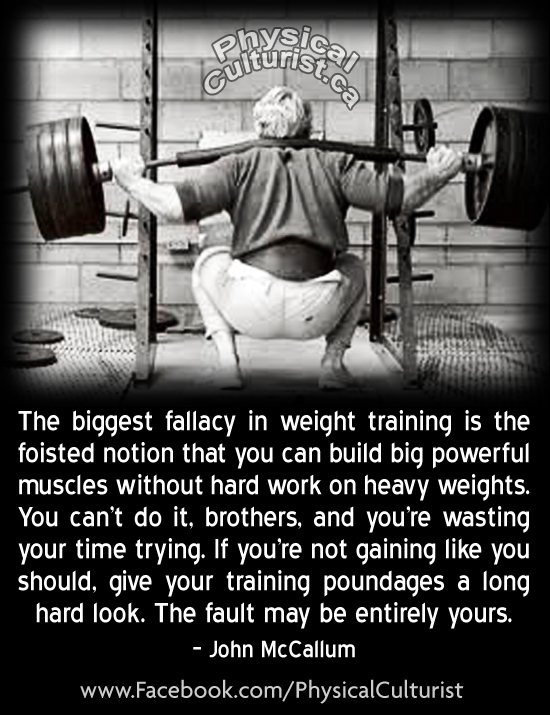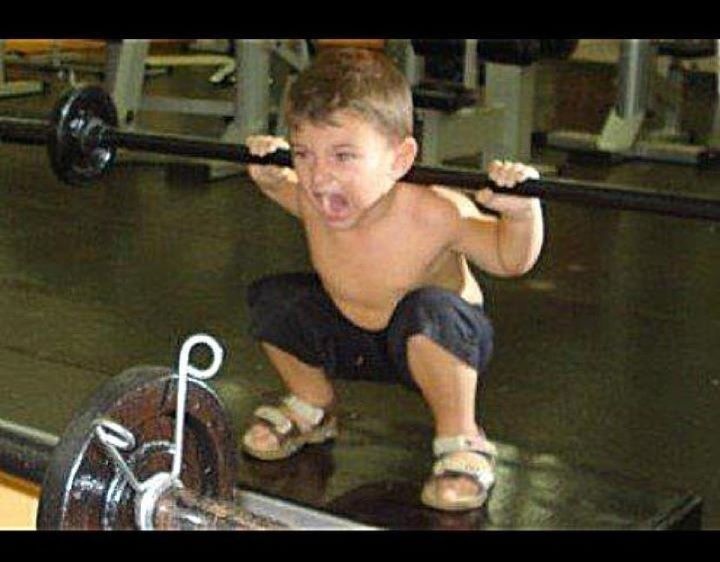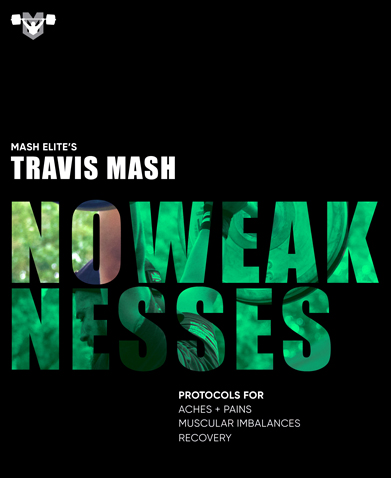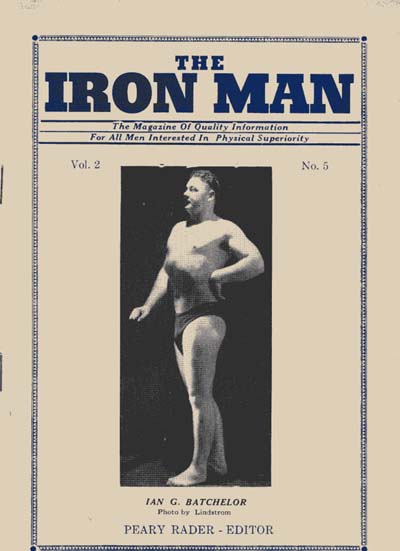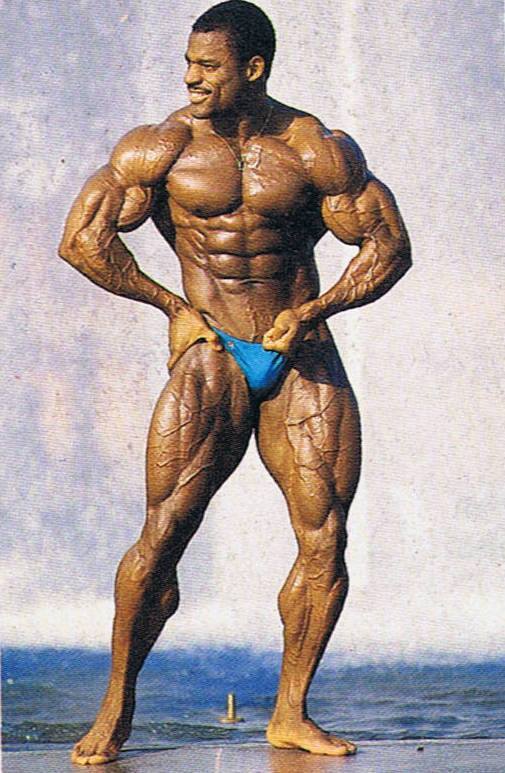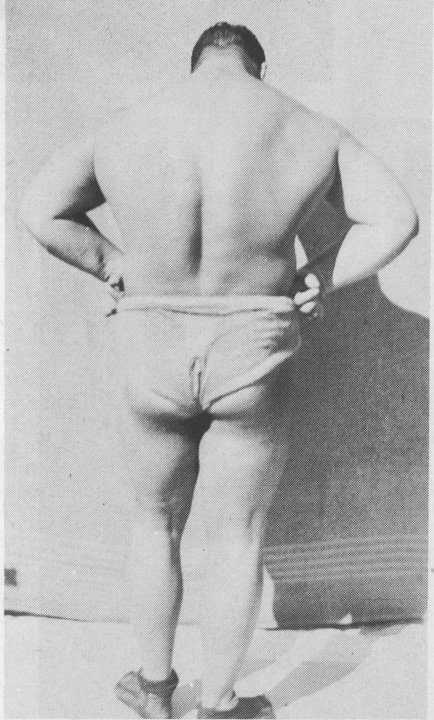Wicked Wheels:
Lethal Leg Training
by Greg Zulak (1992)
Go to any gym and check it out. You don't see many bodybuilders whose leg development matches what they've achieved with their upper bodies. This may be partly due to genetics. It does seem that with legs, especially calves, you've either got 'em or you don't.
Of course, a lot of these lifters have poor leg development because they don't work their legs enough or don't work them hard enough, and this can be due either to laziness, neglect or misinformation.
It's easy to understand why people neglect their legs. Leg training is hard work, at times brutally hard. It's not as much fun to train your legs as it is to work the showier arms or pecs. Basically, the legs contain the largest and strongest muscles of the body. It takes heavy weights, high intensity and tremendous effort to make them grow. Consequently, leg exercises are the hardest to perform. Remember that nobody ever lost his breakfast doing concentration curls or triceps kickbacks, but heavy squats or high rep leg presses to failure can make you lose your breakfast, lunch and dinner all at the same time.
When the Going Gets Tough . . .
When the going gets tough, the tough get going, and the weak leave the gym. There are lots of lazy lifters who just can't be bothered with leg traini8ng. These are the "tank top" trainers, the guys who wear long pants to the beach to hide their skinny and underdeveloped legs. All they train is upper body and arms.
Neglecting your legs is a big mistake because it not only ruins your balance, symmetry and proportions, but it actually limits your upper-body gains as well. If you've hit a sticking point with your upper body, heavy leg and back work will get you growing again.
John McCallum on Leg and Back Specialization:
Anthony Ditillo on Leg and Back Bulk Training:
Chester Teegarden on Louis Abele's Leg Specialization Training:
Soviet research indicates that not training legs can hold back upper-body gains by up to 15 percent.
If having good proportions and proportionate strength is important to you, then you're going to have to bring up your legs to match your upper body. And keep that match in sync throughout your lifting life. To do that you have to train your legs hard. What's more, you've got to train them so that the calves are in balance with the thighs.
If your thighs get too big, they make your calves and upper body look too small. The leg biceps should measure up to the quadriceps (in size and relative strength), and your quads should have good sweep and separation as well as size. This takes planning and attention to detail. And, of course, it also takes a lot of sweat and hard work.
Review:
Purchase:
Advantages of the Genetically Elite
Not everyone can develop great legs. Some folks just don't have the genetics for it. For example, a seven foot basketball player would have a hard time filling out to where he's got the overwhelming thigh mass of a 5' 5" heavily muscled bodybuilder. Others may not have the constitution for it. After all, not everyone has the high pain threshold - or the drive, determination and desire - of a Tom Platz or an Arnold Schwarzenegger.
Besides having a high pain threshold and a superior recovery ability, an easier gainer will invariably be gifted with a superior metabolism; more mental drive and focus; longer, fuller muscle bellies; small, compact joints and more muscle cells in their legs than the rest of us have. Typically they are mesomorphs - naturally thick and muscular specimens who gain muscle easily. Such people find that their legs respond to standard rep schemes - say 6 to 12 reps per set - and that they don't have to do anything out of the ordinary to make them grow. Often they have to stop squatting heavy because their thighs grow too fast relative to their upper bodies, or they don't train their calves much, if at all, because theirs are naturally large and well-shaped.
Chris Dickerson
1982 Mr. Olympia
Former Mr. Olympia Chris Dickerson has admitted that his calves were huge and well-developed before he ever took up bodybuilding. At one point they were actually bigger than his thighs. He often went for long stretches without training them. Once on a six-week tour of South Africa with Boyer Coe - and much to Coe's chagrin - Dickerson didn't train his calves at all.
Juliette Bergmann
Ms. Olympia 2001
Juliette Bergmann, as gifted a bodybuilder as there ever was, never trained her calves. In fact, once at a photo shoot in New York we had to tell her how to use the calf machine because she had never used one before! If only we were all so fortunate.
Most of us aren't, however. We're the ones who sweat bullets when we train legs but still can't get them to respond the way we want them to. Ectomorphs, those long, skinny folks, re the ones who have the most difficulty building leg mass.
Lou Ferrigno on the Tall Bodybuilder's Training:
What the Rest of Us Need
It should be fairly obvious that different types of physiques have different training requirements. An ectomorph can't train like an endomorph and expect to get good results. For the thin ectomorph, who has trouble putting on mass, the obvious answer is to boat-load in the calories and protein and try to add badly needed bodyweight so he can fill out. But that's only part of the solution.
After 23 years of training and observing in the iron game, I believe that many people find it so hard to build leg mass because they haven't developed the neuromuscular and metabolic pathways to their leg muscles. These are the nerve paths that allow you to feel and contract your leg muscles properly.
Much, much more on this in Greg's free 150 page book:
Many bodybuilders fail to respond to achieve increased blood flow to their legs - via larger veins and more blood vessels and capillaries - which is why it is difficult for them to get a good leg pump. In my opinion it is not possible, except in the case of genetically gifted bodybuilders, to develop the neuromuscular and metabolic pathways and increase the blood flow to the leg muscles using low- and medium-rep schemes like 6 to 10 reps per set. The bottom line is, your legs need higher reps.
Again, that book above, being more recent, lays out ways to increase the neuromuscular connection.
Pumping Iron Means Pumping Blood
Back in the 1970s, Dennis DuBreuil published a series of articles in Iron Man magazine concerning his theories of muscle growth. At the time I considered his ideas to be revolutionary - and they still hold true. DuBreuil believed that there is a definite relationship between the amount of blood flow, or circulation, to a muscle and the growth of that muscle; that is, the more you increase circulation to a certain muscle, the better its growth potential. To put it another way, the better - or easier - a muscle group pumps, the faster it will grow.
Haven't you found that to be true already? Aren't your fastest growing muscles the ones that pump up the easiest? Let's follow that theory back to my point about the rep ranges.
How do you make a muscle grow faster? By increasing its ability to pump up. And how do you do that? By increasing blood circulation to the muscle. Okay, so how do you increase blood circulation to a muscle? By doing high-rep work; pumping sets; volume work, or a lot of sets; and, especially, high intensity work. Oh, and by the way, it just so happens that high-rep work, pumping sets, volume work and high intensity work are the best techniques for improving neuromuscular and metabolic pathways to the muscle.
If you've been training your legs with low sets and reps and if you're not getting a decent pump (or any pump at all, which indicates poor blood flow), and your legs aren't growing, you now know what what you have to do. Increase your reps, increase your sets, pump the hell out of your leg muscles and train with high intensity. Believe me, as long as you eat properly, this type of training will get your legs growing when all else fails.
A strong word of caution, however: This program is not suitable for relative newcomers. It's for people who have a couple of years of consistent heavy training under their belts. Beginners should stick to low-rep power workouts to build basic strength and mass and then stay with that as long as they can. In other words,
if you respond to heavy, basic training, keep doing it; i.e., if it ain't broke, don't fix it. Only when you reach a plateau or just can't get your legs to respond should you advance to these techniques.
The Fatigue Product Theory
Another of Dennis DuBreuil's innovative ideas was the so-called fatigue product theory.
More on Dubreuil's ideas:
https://www.t-nation.com/training/scorch-muscle-with-the-dubreuil-effect
http://www.fitflex.com/gain-bulk-power.html
He believed that the fatigue products, such as lactic acid, are byproducts of hard training and have a function in rebuilding a muscle and helping it recover. Therefore, it is important that these substances remain in the trained muscle for a certain amount of time - at least 20 minutes and preferably several hours or longer. If they are flushed out before they perform their important chemical duties, as will happen if you immediately begin to train a new muscle group, your muscle growth will be reduced and your recovery hampered. Thus, ideally you should work only one muscle group per training session and do two or three workouts a day.
Few of us have the time to train several times a day, so DuBreuil said that the best compromise is to train muscle groups that are close to each other in the same workout so the blood remains in one area of the body. For example, biceps with triceps, chest with delts, lats with traps, and quads with hams. To accomplish this you might split your body over four days and have an all-leg day, a back day, a chest and shoulder day, and an arm day.
The benefit in terms of your leg development is that by training your legs on a legs-only day, you keep the blood and fatigue products in them for many hours, producing the maximum effect. Schwarzenegger and many others have trained this way. To further take advantage of the fatigue product theory you could split the body over five days, performing three upper-body workouts and two leg sessions, as follows:
Day 1 - quads
Day 2 - lats, traps and lower back
Day 3 - calves and hamstrings
Day 4 - pecs and delts
Day 5 - biceps and triceps
There are several advantages to this five-day split. First, you can get in more work on the three separate leg areas - calves, hams, and quads. This takes care of the requirement that you should do volume work. Second, you keep blood in the quads only on quad day and in the hamstrings on calves and hams day. The result is a bigger pump in all leg muscle groups. Finally, you have more energy, enthusiasm and strength, as well as concentration, so you can train your separate leg muscles with more intensity.
So, based on DuBreuil's ahead-of-his-time concepts, we have two basic guidelines for putting together a program to accelerate leg growth:
1) Do high-rep sets, pumping sets and volume work, along with high-intensity technique, to increase blood circulation and develop the neuromuscular and metabolic pathways to the muscle.
2) Train the different leg muscles separately from each other and/or the upper-body muscles to take full advantage of the fatigue product theory.
Heavy Weights and High Reps? The Heavy-Light Solution
It may seem like a contradiction that I've told you to use both heavy weights
and high reps to develop your legs. "How can you train legs with heavy weights and high reps?" I hear you asking. "Aren't the two mutually exclusive?"
The answer is yes and no. To begin with, the idea of what constitutes heavy is relative to the style you use to lift the weight and how hard you do the set. If you perform a 20-rep set of squats in constant tension style, never locking out, your legs will burn and ache a lot more than if you lock out and rest-pause on each rep. At the same time you won't be able to use as much weight when you train constant tension style as you would doing full lockouts with pause. Either way, though, if you take a set to failure, as far as I'm concerned you're going heavy - regardless of the actual weight you use.
I don't care if you're doing 50 reps. Heavy is heavy. If the last rep is all you can do, that's going heavy as you can for 50 reps.
The best way to train legs and incorporate both heavy weights and high reps is to apply the heavy-light method. There are two basic ways to do this:
1) Include both heavy-weight, low-rep sets and lighter-weight, high-rep sets in the same workout.
2) Alternate heavy-weight, low-rep sessions with lighter-weight, high-reps workouts.
Both of these approaches are effective. In the latter case you might do all your leg exercises for 6-8 reps on your heavy day, and switch to reps in the 15-50 (yes, 50!) range on your lighter day. Another variation is to start the workout with one or two heavy exercises, holding the reps down, say, to 4-6, and follow that with either high-rep work, supersets, tri-sets, or triple drops.
The triple-drop method is especially effective for including heavy and light training in the same set, particularly for those who train alone. You use it on machines that have easily accessible weight stacks, such as leg curl, leg extension, and calf machines. You simply drop the pin to a lighter weight on the stack and continue with the set. Three drops in a set, reducing the weight about 10 percent each time, is enough to maximally tax the muscle. A hard triple-drop set can range from 15 to 30 intense reps. Now,
that's intensity! And to think you're using both heavy and light weights in a single set.
Heavy-Light Workout One
Calves:
Standing Calf Raise, 4 x 10
Seated Calf Raise, 3 x 20 superset with
Donkey Calf Raise, 3 x 20.
Hamstrings:
Leg Curl, 5 x triple drop
Parrillo Deadlift, 3 x 10-12
- John Parrillo showed me this movement, and it definitely stretches the hamstrings more than regular stiff-legged deadlifts. The regular version is little more than a toe-touch with a barbell in your hands. When you do that exercise, your low back rounds convexly. In order to stretch the hamstrings, however, you have to lower to your toes or beyond, which is why stiff-legged deadlifts are normally done from a high block or off a flat bench. This can hyperextend the lower back and cause injury.
With Parrillo deadlifts you use less than half the weight you would use for the stiff-legged variety and rarely lower the bar beyond mid-calf level, yet your hamstrings are truly stretched to the maximum. How can this be? Because when you do Parrillo deadlifts you BEND FROM THE HIPS, not the lower back. You also arch your back concavely and keep it in that position throughout the exercise. The lower back is never rounded.
You perform Parrillo deadlifts as follows:
Hold the bar at the mid-thigh point to start the exercise and arch your lower back, thrusting your buttocks out. Maintain this position as you lower the bar to full stretch, which will probably occur between knee and mid-calf level depending on your flexibility. Come up three-fourths of the way to keep tension on your hamstrings, and lower again. Your hamstrings will burn and stretch like never before - and without any stress on the lower back.
- Note: I first saw this as part of a Dan John Oly weightlifting tutorial video. Here:
He had a great way of getting beginners and those new to Oly lifting to get that killer hamstring stretch mentioned. If you train alone, just grab an empty bar and stand a little ways in front of a post with your knees slightly bent. Then, concentrating on hamstring stretching, PUSH BACK your butt until it touches the post behind you. You'll be surprised if this is the first time you've done this. After you get the hand of getting that real strong stretch, move forward a little and once again try to touch your butt to the post, all the while attempting to stretch your hamstrings for all you're worth. After you get getting that feel down, you'll never go back to regular stiff legged deads. Beautiful!!! And so's that video.
Back to the routine -
Quadriceps:
Squat, 5 x 5
Leg Extension, 4 x 5-20 superset with
Incline Leg Press, 4 x 20-25.
Heavy-Light Leg Workout Two
Calves:
Standing Calf Raise, 4 x 12, 10, 8, 6, triple-drop last set
Toe Press on Leg Press, 3 x 20-25 tri-set with
Seated Calf Raise, 3 x 20-25 and
Donkey Calf Raise, 3 x 20-25
Hamstrings:
Lying Leg Curl, 5 x triple-drop
High Foot Position Leg Press, 3 x 20 superset with
Parrillo Deadlift, 3 x 12
Quadriceps:
Leg Extension (warmups), 2 x 20
Squats (or Smith machine squats), 7 x 10, 8, 6, 6, 4, 3, 1-2
Hack Squat, 3 x 15
Incline Leg Press, 6 x 15, 12, 10, 20, 35, 50
I find that performing high reps on the leg press is very effective for training my thighs. By doing up to 50 reps to absolute failure, I was able to pump up my quads like balloons and finally get them growing after years of stagnation on low-rep heavy sets. For a guy who had stork legs all his life, this was gratifying, to say the least!
The same is true for hamstrings. If like most people you've been training them with 3 to 5 sets of lying leg curls and a few sets of stiff-legged deadlifts and getting poor results, hit them with volume sets and triple-drops, as described. As for the highest-intensity combinations, however, I recommend you save those routines for when you're doing a five-day split in which hamstrings are trained with calves, on a separate day from quads.
Stretching the Benefits of Heavy-Light
As effective as this type of training can be, you'll get even better results if you do exercises after every set to stretch out your facial tissue, which is the protective sheath that covers all the muscles of the body.
Here's a little more on fascia:
http://www.physiosteps.co.nz/what-is-fascia/
And Tom Myers book "Anatomy Trains" :
https://www.anatomytrains.com/product-category/books/
James Earls' book "Born to Walk: Myofascial Efficiency and the Body in Movement:
https://www.anatomytrains.com/product/born-to-walk-myofascial-efficiency-and-the-body-in-movement/
I have found fascial stretching to be particularly effective for bringing out quad and ham separation and for improving shape. Done properly and consistently this kind of stretching will increase flexibility, reduce injuries and lower your Golgi tendon reflex organ's threshold, which means you can train heavier and with more intensity for more reps before your Golgi tendon reflex organ fires and shuts the muscle down.
Fascial stretching was made widely known to lifters by John Parrillo, the Cincinnati-based trainer and nutritionist. This is not the gentle, bend over and touch your toes type of stretching that's often done for a warmup or cool-down. It is an aggressive, forced and often painful stretching of the fascial tissue, with specific stretches designed for specific muscle groups.
- Steve Holman on Fascial Stretching:
The idea of stretching the muscle fascia, the fibrous encasements that
surround muscle fibers, has been around for a while. The original method
had you use a rigorous, painful stretching regimen after you trained a
bodypart. For example, after working hamstrings, you’d sit on the floor,
legs straight and together, and your trainer would force your torso
forward to fully elongate the hamstrings—it brought tears to the eyes. Fascia stretching makes sense because the encasements are made of tight
tissue that can constrict the muscle and restrict growth. Stretching
those sheaths gives the fibers more room to grow. It’s comparable to
stretching a balloon before you blow it up; the prestretching enables
you to fill the balloon with air much more easily, without collapsing a
lung or forcing your eyes to pop out of their sockets.
- More on Parrillo's FX Stretch Ideas, with a tie-in to John Grimek:
http://www.professionalmuscle.com/forums/professional-muscle-forum/44747-john-parrillos-fx-stretch%99-fascial-stretching-system.html
The fascial tissue can become toughened and thickened, making it difficult for your muscles to grow, expand and separate.When the tissue is stretched out, however, the muscles underneath get more room to grow and more convolutions are made in the muscle, which increases the separation.
Try performing the following stretches after each set of leg work - I mean, literally,
after each set. 10 sets for the quads means 10 sets of quad stretches; and the same goes for calves and hams. (Golden era bodybuilder Frank Zane advocated stretching between each set.).
- Calf Stretch:
Stand on a high block (the platform of a standing calf machine will do), and drop into the low position of a one-legged calf raise. Stay in that position, really throwing your weight back onto the leg to make your calf stretch to the max. On the first few sets hold for a count of 10-15 seconds, but add a few seconds on every set. By the last set you should be holding for about a minute. Alternate legs, of course, and be prepared for a lot of burn and pain.
- Quad Stretch:
Stand in front of a sturdy piece of equipment with your back to the apparatus; a hyperextension bench is ideal, for example. Bend your right knee, grasping your right ankle with your right hand. Tuck your knee behind you, holding it against the bench, and lean back as you press your heel into your glute, pushing the quad down and back. Hold for a count of 10-15 seconds and repeat with the other leg.
- Hamstring Stretch:
This is a ballet-type stretch. Place your right foot on a high railing or piece of equipment. Keeping your leg straight, lean forward and try to touch your head to your knee, really feeling the stretch in your hams. Hold for a count of 10 and repeat with the other leg.
To Squat or Not to Squat?
That certainly is the question. Everyone knows that squats are the key thigh exercise, the one you supposedly need for ultimate mass and development. All the best bodybuilders, the ones who had great leg development, were squatters - despite what Vince Gironda says about squats overdeveloping the glutes and upper thighs, widening the hips and ruining symmetry. Even so, not everyone's structure allows them to do heavy squats. If that's honestly your situation, you don't have to give up hope.
If you find that you always end up injuring your lower back whenever your squats get to a higher poundage, then do your squats on the Smith machine. This lets you place your feet ahead of your body and lean back slightly into the bar as you go down. It helps keep your back straight and throws all the stress onto your quads, not the hips, glutes and lower back. It's a safer, stricter way of squatting one that requires less weight than regular squatting. Also, you'll develop more muscle closer to your knees instead of higher up on your thighs, which can give the quads that ugly turnip look.
If you don't have access to a Smith machine, then stick with front squats, belt squats, hack squats and leg presses. To relieve stress on the wrists and clavicles when doing high-rep front squats, hold the bar with your arms crossed, or use straps.
http://ditillo2.blogspot.ca/2011/11/straps-for-higher-rep-front-squats-doug.html
Three, Count 'em, Three!
Clean Grip, Crossed Grip, Straps
The Trick to Changing Foot Positions
When you do any type of squats or leg presses, your foot position influences the muscle development. To create thigh sweep keep your feet wide apart and your toes pointing out. The movement should feel as though you are pushing from your heels, not the balls of your feet. To build the front quads place your feet closer together with your toes pointing straight ahead. This should feel as though you are pushing with the balls of your feet, not the heels.
- High-leg Presses:
This variation is great for developing the hamstring-lower glute area. Position your feet very high on the leg press, with just your heels touching the top of the platform. Your toes and part of the balls of your feet should be completely off the platform. Lower the weight as far as you can into your arm pits and push to within an inch or two of lockout. Really focus on the hamstrings and feel the pump there.
The Final Frontier - A Mega-Intensity Blast
Give some of these techniques a try and see if your legs don't respond better than they have been. Here is a highly specialized leg routine, designed to be used on days one and three of a five-day split schedule, as described earlier.
Advanced Heavy-Light Routine
Day One - Quads Only (do a fascial quad stretch after every set)
Leg Extension, 3 x 15-20
Squat, 6 x 15-20, 12, 10, 8, 6, 4
Hack Squat, 3 x 15, 12, 10
Leg Press, 8 x 20, 15, 12, 10, 20, 35, 50, 50.
Day Three - Calves and Hamstrings (Do a fascial calf or hamstring stretch after every set)
Calves:
Standing Calf Raise, 4 x 12, 10, 8, 6
Toe Press, 4 x 20 tri-set with
Seated Calf Raise, 4 x triple-drop, and
Donkey Calf Raise, 4 x triple-drop.
Hamstrings:
Standing Leg Curl, 4 x triple-drop
Lying Leg Curl, 4 x triple drop
High-leg Press, 4 x 12-20
Parrillo Deadlift, 4 x 10-12.
After several months of this kind of volume training reduce the number of sets, increase the weight you're using, while trying to train with even higher intensity.


